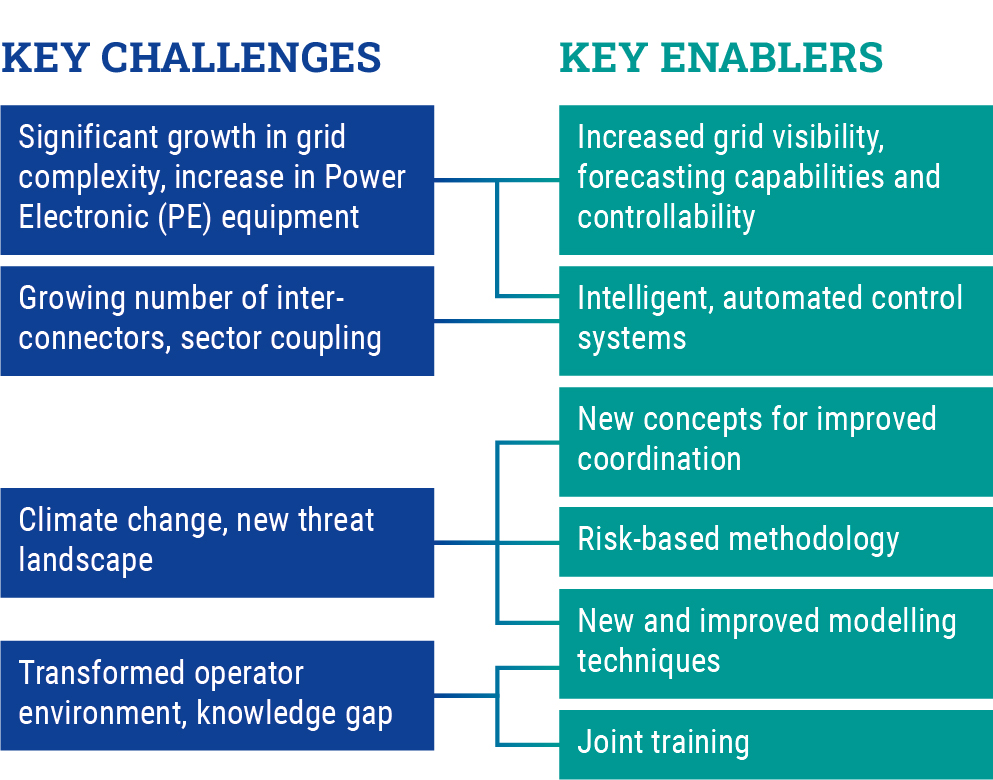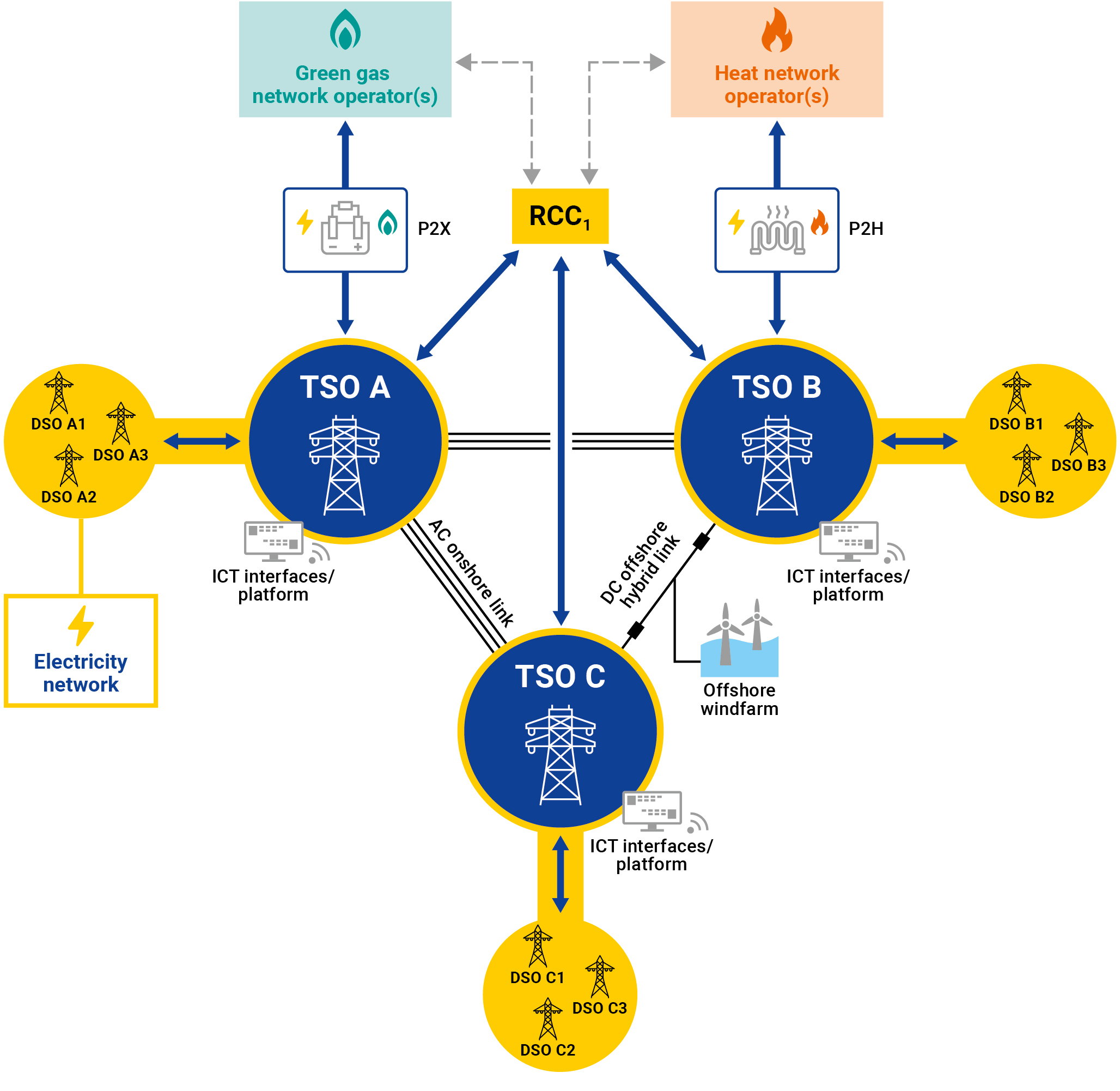Operating Future Grids
New approaches are needed to fulfil the overarching goal of a secure and efficient power system operation for the whole of Europe, and TSOs will need to change and go beyond the boundaries of today’s core activities. The main drivers for this expansion in scope are the ever increasing share of distributed energy resources, weather dependency of both generation and demand, sector integration through flexibilities, transmission and distribution coordination, and changes in the energy market design to cope with these challenges across the future energy System of Systems.
TSOs and DSOs will need to accelerate the uptake of new and emerging technologies available to control the grid in a secure and efficient way, to cope with the characteristics of the future power system.
Significant weather dependency will have a strong impact on the operation of the system. This calls for a more integrated approach where demand will need to become increasingly more capable of adapting to changes in generation to ensure a continuous balance in supply and demand. A variety of flexibility sources will be needed to maintain an acceptable level of security and resilience. The needs identified by TSOs and DSOs will be translated into services and market-based mechanisms, developed to provide the related flexibility services for planning and managing the system.
The following key challenges will need to be addressed, and key enablers developed to make this new reality possible:
- For TSOs to operate the unprecedented growth in grid complexity and maximise the use of the grid capacity, there is a need to have significantly enhanced granular, real-time visibility on the system state and on flexibility sources, including enhanced forecasting capabilities and controllability.
- System characteristics (e. g. the level of inertia and short-circuit current) will have changed dramatically and dynamic stability issues (e. g. voltage and frequency stability and oscillation damping) will become as common and important as congestion management today. This will require a new approach where automation will act as the extended arm of human TSO operators to cope with extreme dynamics and grid complexity.
- Automation and artificial intelligence will be applied extensively to enhance system resilience by providing a new, protective layer to the grid, serving as an extension of the initial grid response, creating room for decision making for the human TSO operator. The decision-making will be helped by intelligent decision support tools that explore all options available in a particular situation.
- The full potential of Direct Current (DC) interconnectors and power electronic equipment will be required to support the integration of Renewable Energy Sources (RES) via grid forming capabilities to fully utilise the advanced controllability of power electronics and load flow.
- The future European energy system will be even more reliant on the power system, and therefore more exposed to its increasing risks and threats. To tackle the new threat landscape, an improved design for resilience will require new risk-based methodologies, multi-sector awareness, training and higher cyber security preparedness, all linked to the increase in automation and digitalisation of the grid.
The integration of wide scale flexibilities, coming from transmission (nationally and cross-border), distribution and other energy sectors, will result in a new concept for coordination of all operators and actors involved, within a true ‘System of Systems’. Resources and networks will need to be operated in compliance with all individual systems needs and aligned with the principles of efficiency and security.
The operation of the future transmission grid will be done in close cooperation:
- amongst TSOs at European and Regional level, assisted by Regional Coordination Centers (RCC);
- with DSOs inside each control zone;
- with other energy sectors integrated with the power system such as Hydrogen.


